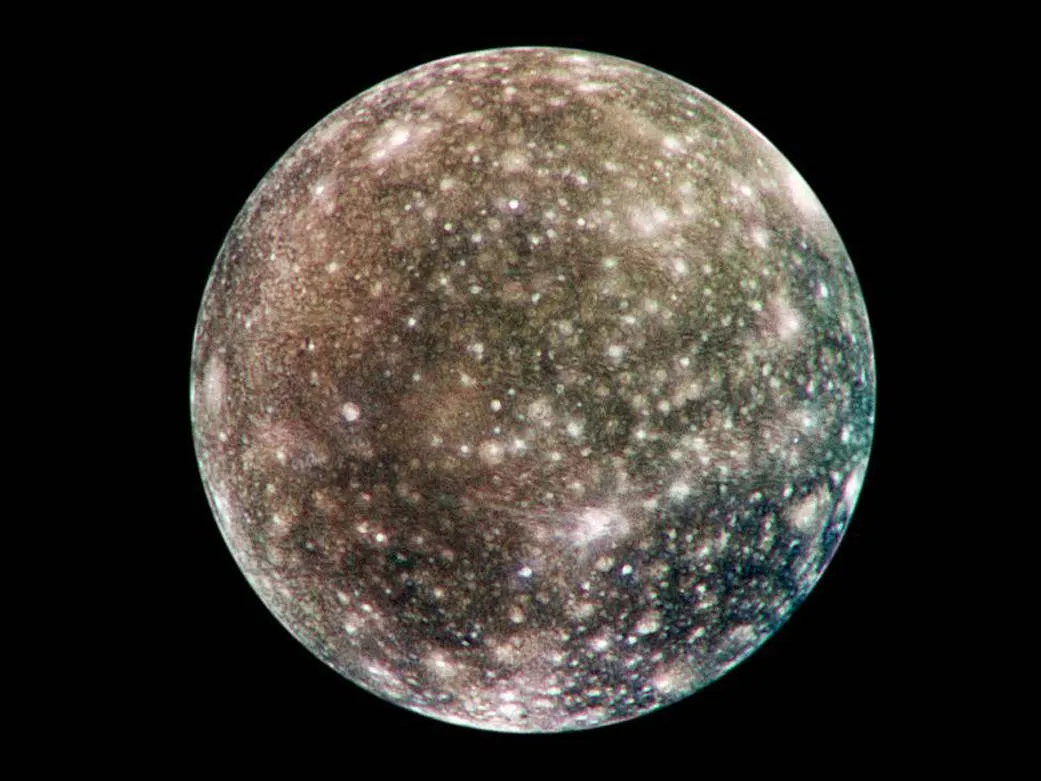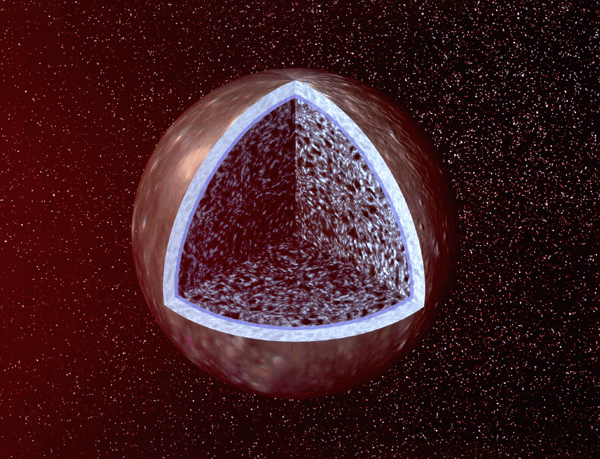
Callisto is the least spoken about, related to the Galileo moons. It even was called the most boring object in our solar system at one point. Callisto was discovered in 1610 and is the third largest moon in our solar system. Its size is very close to Mercury's. This moon to me is the best to colonise out of the Jovian moons, for several reasons so let’s dive into it.
Jupiter's radiation belt influence, can best be seen with Io's violent volcanic surface. It's deadly for anyone exposed to it for a short period of time. I mentioned before how on Europa its bath in 540 rem of radiation daily and how 500 rem is considered a fatal dose. Callisto sits outside of Jupiter's major radiation belt and receives 0.01 rem per day.
Callisto was called boring and dead because of its heavily cratered surface. These shows there are no signs of this moon having subsurface processes like plate tectonics or volcanism. This silence was the reason for many to believe Callisto was dead. As unlikely as this sounds; the quiet impacted surface is a good sign that the moon is geologically stable. People planning to colonise wouldn’t have to worry about volcano, mountains or picking a location away from frequent natural disasters.
Callisto was long thought to be a rocky surface with little features, compared to its neighbouring moons. It's my favourite out of the Jupiter’s moons, before I knew what might be under that deceivably plain looking surface. In 1996 Galileo spacecraft, did flybys of the moon revealing more information. We learnt it had a weak carbon dioxide atmosphere and evidence of a subsurface ocean. Subsurface oceans has become a common occurrence in our solar system as we have Jupiter’s moon Callisto, Europa, Ganymede and Saturn’s Enceladus, Mimas, Dione, Titan, Uranus’s Ariel and Neptune’s Triton all suspected to have liquid.
Another big benefit like Europa, Callisto has 68 neighbouring moons. Jupiter's vast system will contain plenty of resources like salt water, iron, rock, sulphur, helium 3, oxygen and much more. Callisto itself has water and CO2 which can be used to grow food and make fuel. These resources and this moons location, is a great stepping stone for going further afield.
Disadvantage
This crated moon being so far away from the sun, it would have limited solar energy. This moon only receives 1/25th of the solar energy that Earth does. So solar power can still be used but everything would need to be 25 times bigger to get the same amount we would here. At that size transporting it would be a problem.
Callisto’s distance is a major issue with today’s technology as it would take six years to arrive at the Jovian system. To transport people and heavy equipment would quickly see the price rising. Also because of the sheer length of this mission, a base in between would be needed for refuelling. This mission would come with a hefty price tag.
Source
https://solarsystem.nasa.gov/moons/jupiter-moons/callisto/in-depth/
http://sci.esa.int/juice/59907-juice-s-secondary-target-callisto/
https://ntrs.nasa.gov/archive/nasa/casi.ntrs.nasa.gov/20030063128.pdf
